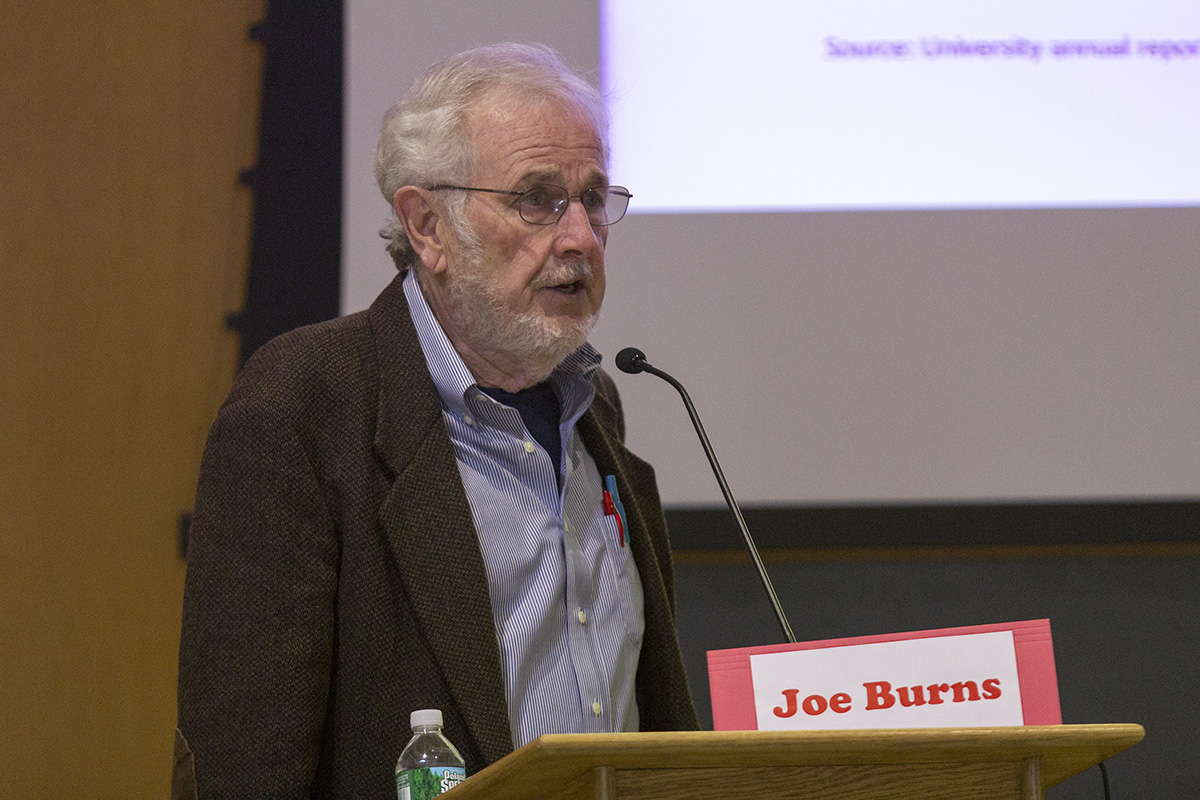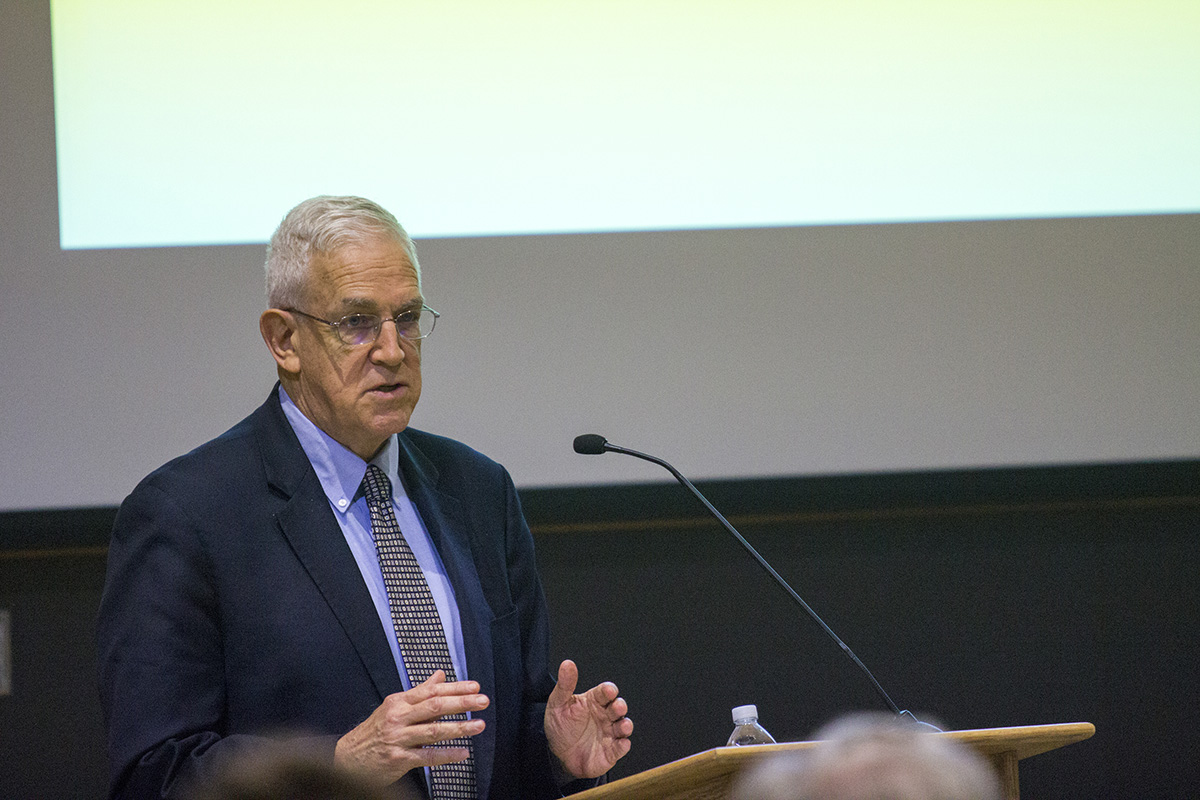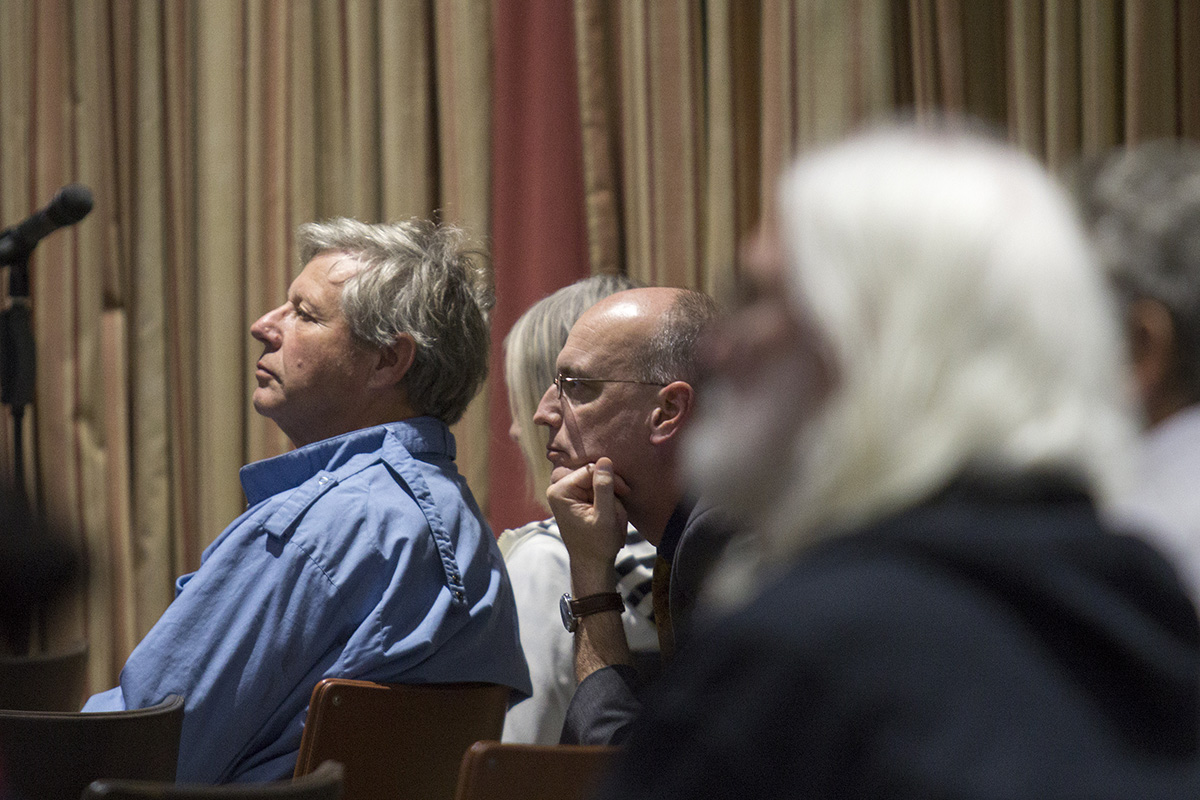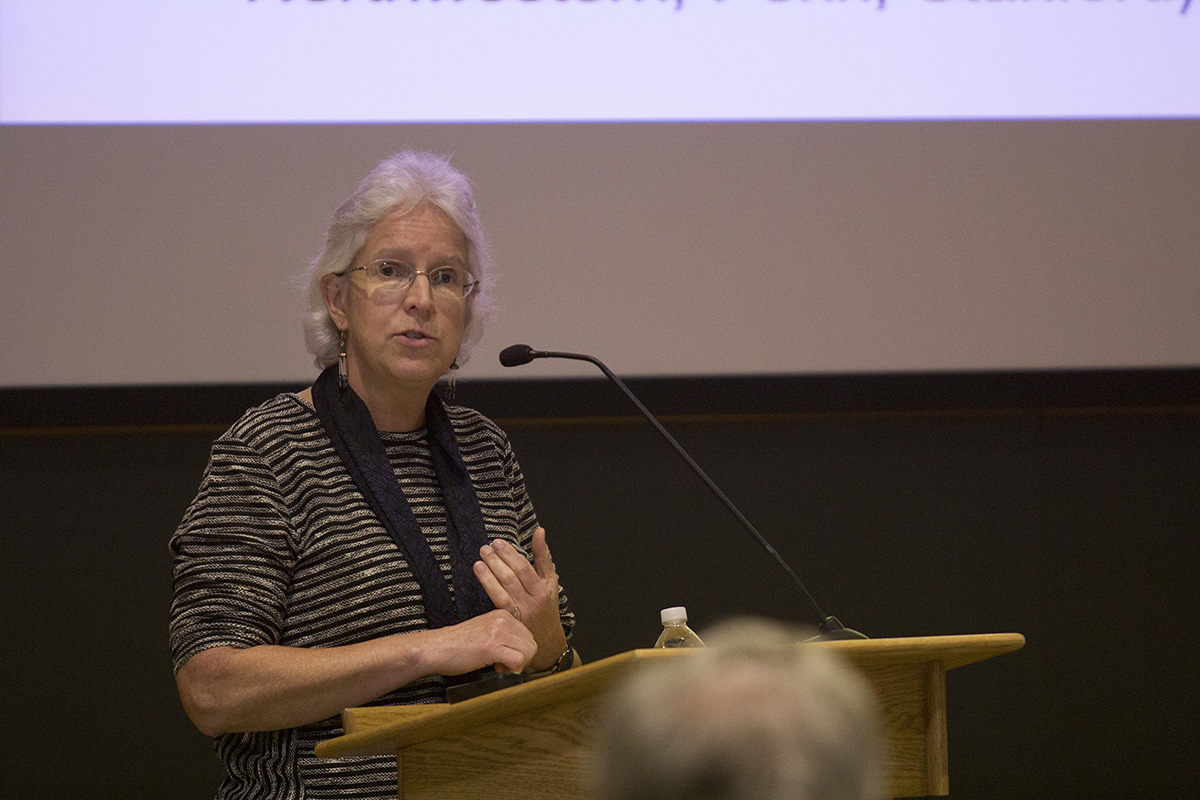Forum explores costs, outcomes of financial aid policy
By Daniel Aloi

Faculty and administrators discussed balancing the rising expense of financial aid against maintaining and enhancing the university’s academic profile at a faculty forum, “Financial Aid Policies: Unimaginable Outcomes?” Oct. 21 in Clark Hall.
“We want to have the best students here,” Dean of the University Faculty Joseph Burns said. “Do we continue our need-blind admissions and need-based financial aid policy, or do we use those funds in some other ways that make that policy more effective?”
Ronald Ehrenberg, the Irving M. Ives Professor of Industrial and Labor Relations and Economics and author of “Tuition Rising: Why College Costs So Much,” was among the participants who highlighted “the social role of private higher education,” including having a diverse student body – and the allocation of funds for student financial aid and such expenses as faculty and staffing, institutional support for research, maintaining existing buildings and funding new construction.

“How does Cornell decide the relative importance of the different things we all care about?” said Ehrenberg, who also directs the Cornell Higher Education Research Institute. “Financial aid is but one important thing that the university values, and Cornell must decide what the appropriate level of its resources are to devote to each area.”
Burns pointed out the dramatic rise in undergraduate financial aid at Cornell, from $179 million in 2009 to $238 million in 2014.
Revenue, expenses and aid
Vice President for Budget and Planning Paul Streeter outlined the university’s revenue and expenses, and the costs associated with financial aid in recent years.
Net revenue from undergraduate tuition has risen just under 3 percent from fiscal year 2009 to fiscal 2015, and “our dependence on gifts has grown,” he said. “Cash received from gifts grew 9.5 percent annually over that same period.”
Annual state and federal appropriations to the university declined by $33 million from 2010 to 2015. “Contract colleges have felt this particular decline the hardest,” Streeter added.
Among expenditures, salaries – “the largest percentage of the university’s budget” – have grown less than 1 percent annually, “reflecting our slowdown in faculty hiring and the reduction in staff on campus.” Facilities expenses such as maintenance and utilities have risen with the growth of spaces on campus, he said.

Meanwhile, unrestricted financial aid given to undergraduates – as opposed to “restricted” aid from gifts or targeted endowments – grew from an average of 20 percent of student tuition costs in 2007 to approximately 32 percent in 2015, Streeter said. “For five years [2010-15], the trustees authorized an additional $35 million per year to support financial aid … explicitly as a buffer through this period.”
While the annual $35 million allocation from the endowment has been discontinued, Streeter said, “the higher financial aid commitment remains and is contributing to the deficit we are currently working to eliminate.”
Said Provost Michael Kotlikoff: “If you look at what happened at Cornell over the last 10 years, we had the financial downturn in 2008; we also made the decision to be much more generous in financial aid. That lowered the total cost of education for many, many students, but decreased revenue to the undergraduate colleges from tuition. The consequence of the loss of tuition revenue was either a negative impact on college budgets, cuts in other parts of the university, or deficits. That’s basically what the tradeoff was, and we generated deficits. You can argue with the choices … but we must also acknowledge the impact that this decision had in terms of access to the university.”
Access and financial need
Senior Vice Provost and Dean of the Graduate School Barbara Knuth, who oversees undergraduate admissions and financial aid, said that less than half of Cornell’s undergraduates receive need-based aid, and that there is “no free ride – every aided student is expected to contribute to their education.”

She noted that undergraduate students who receive financial aid “graduate at about the same rate as non-aided students” and that Cornell remains committed to such goals as maintaining economic diversity and providing “access to education for deserving students.”
Suzanne Mettler, the Clinton Rossiter Professor of American Institutions in the Department of Government and author of “Degrees of Inequality: How the Politics of Higher Education Sabotaged the American Dream,” said that historic national policies meant to increase access, such as the 1965 Higher Education Act, have stagnated and are now less effective in the face of rising economic inequality, partisan politics and legislative gridlock.
“For people below median income today, only 1 in 10 that come from that bottom quartile end up with a college degree by age 24,” she said. “For a young person today, it matters not just whether or not they enroll in college, but where … because there are very different experiences and outcomes from sector to sector.”
Among private nonprofits, Mettler said, Cornell is “one of the good actors here, inasmuch as while we have a high sticker price for tuition, in fact what students with financial need are actually paying is much less than that.”
Student success
Students who take on loan debt also were discussed. “There is a concern that large debt levels affect career opportunities of the students in the things that they major in,” Ehrenberg said.
“When Princeton eliminated all loans from their financial aid policies, they found the fraction of their students going on into what we’d call public interest jobs paying less than a certain amount dramatically increased,” he said. “At a place like Cornell, where we have a land-grant mission and a social consciousness, we would like all of our students … to go into whatever they think will be socially useful, even if it’s not high-paying.”
Ehrenberg and Cornell trustee Barton Winokur ’61 talked about the use of financial aid policies to achieve a class of highly academically talented students.
Winokur stressed the university’s role for underrepresented lower-income students and minorities. “The endgame is getting them here and having them be successful,” he said.
In 2012, as a member of the College of Arts and Sciences Advisory Council, he went to then-dean Peter Lepage “and said, ‘Cornell should be the first to adopt the Posse program’” for extraordinary urban students – “a program where we make sure they’re successful.”
Through the Posse Foundation, Winokur said, he funded the first Posse class of 10 students at Cornell. The program also was targeted for $5 million in support over five years from the Cornell Now campaign.
“We can do the things that really make a difference,” he said.
Media Contact
Get Cornell news delivered right to your inbox.
Subscribe